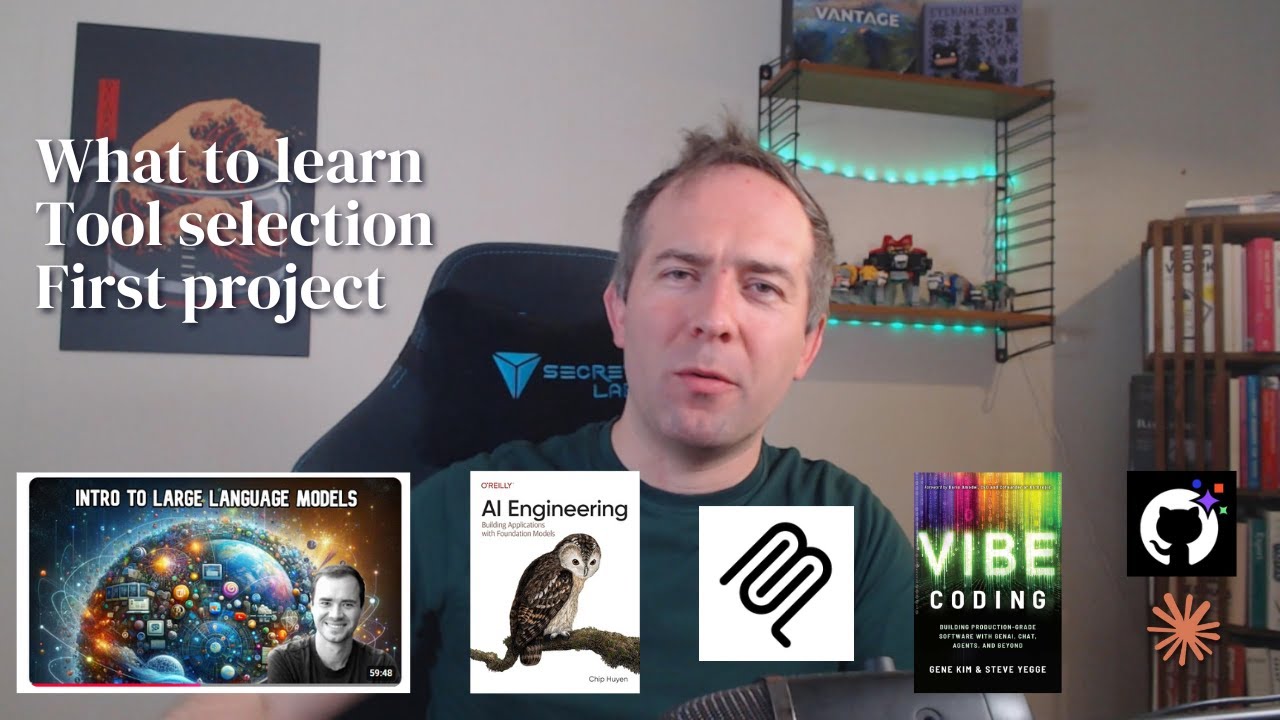The video highlights the growing role of AI coding assistants in software development, recommending foundational learning resources and a progressive “AI coding fluency ladder” to effectively integrate these tools into various workflows. It also emphasizes the continued importance of traditional coding skills and software design principles to ensure quality and security as AI-generated code becomes more prevalent.
The video discusses the growing importance of AI coding assistants in the programming world, emphasizing that whether you’re a novice or an experienced developer, these tools are becoming an integral part of the workflow. The presenter recommends starting with foundational resources to build a solid understanding of large language models (LLMs) and AI coding agents. Key recommendations include Andrej Karpathy’s YouTube video on LLMs and the book “AI Engineering” by Chip Huen, which covers essential topics like prompt engineering, retrieval-augmented generation, and coding agents. Additionally, the presenter highlights the emerging Model Context Protocol (MCP) as a crucial concept for integrating AI tools effectively.
The video also introduces an upcoming book titled “Vibe Coding” by Jean Kim and Steve Yaggi, which focuses on AI-assisted coding and the concept of “vibe coding” — programming primarily through prompts rather than manual coding. The book explores themes such as leveraging optionality by running multiple AI agents in parallel and implementing guardrails to manage the naivety and potential risks of these powerful tools. The presenter appreciates the authors’ forward-thinking approach and recommends following their YouTube series for deeper insights.
Next, the presenter outlines a practical “AI coding fluency ladder” for developers to progress through various levels of AI tool usage. Starting with basic web-based chat interfaces like ChatGPT or Claude, developers can move to integrated IDE assistants such as GitHub Copilot and JetBrains AI chat, which offer more seamless coding support. The next level involves CLI-based coding agents like Cloud Code and Google Gemini CLI, which provide more control and flexibility. Beyond this, the presenter discusses advanced use cases involving parallelizing AI agents and enterprise-level solutions, noting that while promising, these higher tiers often come with increased costs and complexity.
The video also touches on the rise of “vibe coding” tools aimed at non-technical users, such as Lovable and GitHub Spark, which allow users to create apps through natural language prompts. The presenter stresses the importance for professional developers to understand these tools, as they will increasingly produce code that engineers must review, secure, and maintain. This shift underscores the need for developers to be familiar with the underlying technologies, limitations, and potential security concerns associated with AI-generated code.
Finally, the presenter addresses the ongoing relevance of traditional coding skills despite the rise of AI assistants. They recommend focusing on three core areas: software architecture and design (with an emphasis on modularity), domain-driven design to align code with business language, and robust test automation that supports fast, isolated, and parallel test execution. These fundamentals will serve as critical guardrails to ensure quality and reliability as AI tools become more prevalent in software development. The video concludes by encouraging viewers to pick a tool and project to start experimenting with AI coding agents and to share their experiences in the comments.
